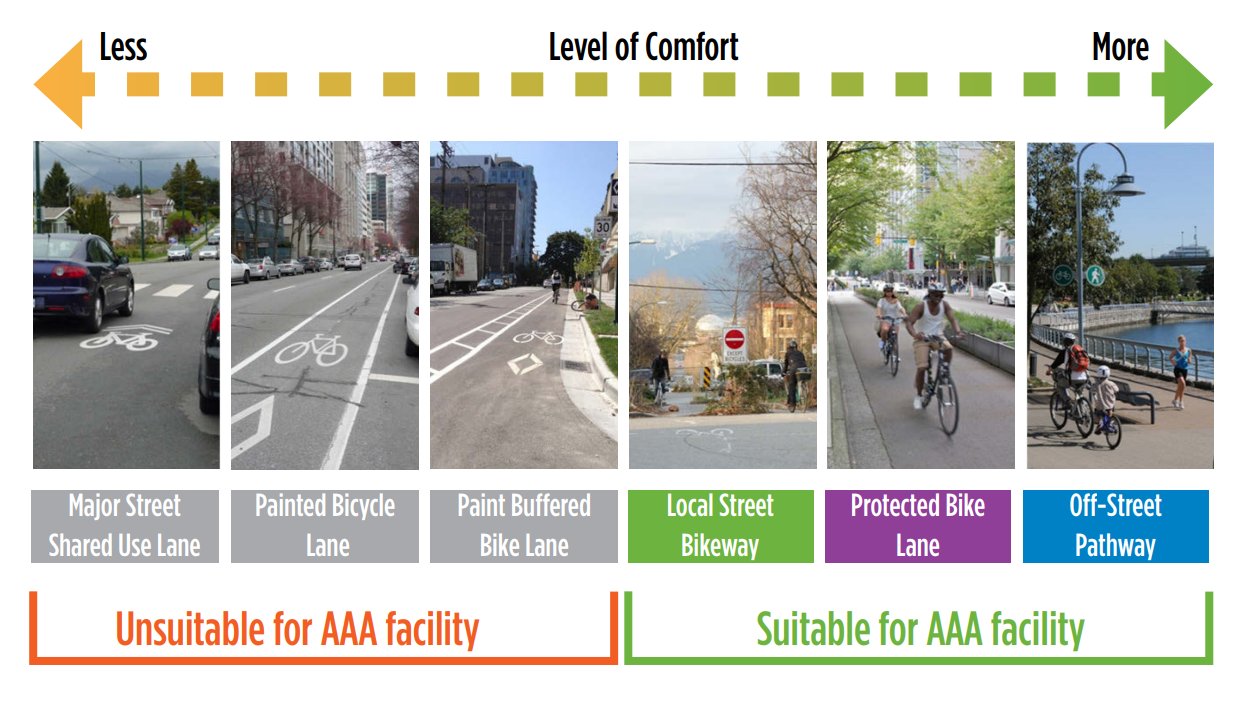BMO
Senior Member
The reason that the "before" scenario has a decline is that all the bars to the left are from data in 2000, the bars to the right are taken in 2010. They could have labelled it better but I don't think it's that confusing.
The lanes without any bike infrastructure saw the accident rate drop because overall cycling levels increased from 2000 to 2010.
Actually, I didn't notice that the right axis coincided with the small dot on the charts.
It's also strange, since it looks like streets that had Sharrows installed were already streets that had higher bike ridership and already had lower injury levels compared to streets that had no improvements. We also don't have a sense of scale. For instance it shows that bike injuries declined the most for bike lanes, but those new levels are still higher than the Before scenario for sharrows, which would personally lead me to believing that in general you are less likely to get injured on a sharrow roadway based on this data. We don't know what type of roadways the bike lanes were put on or sharrows put on. For all we know sharrows in the study were only placed on local roadways and bike lanes were placed on high volume busy roadways. We also have no clue of what type of injuries are correlated with sharrows before and after. Are we seeing more pedestrian/Cyclist injuries on Sharrows that are leading to lower reductions in overall injuries? Or are they really still predominantly Cyclist/Auto conflict injuries.
That's not to say the data doesn't tell us something. Yes it seams like Bike Lanes have a substantial impact on reducing injuries, but I feel as if their effectiveness probably depends on WHERE they are placed, same with sharrows. For instance, I personally don't agree with putting sharrows on Spadina, I feel like as a cyclist you're just asking for trouble riding on that street, this is where a Bike Lane should be placed. On the flipside, a bike lane on Welling St W just west of Bathurst seems redundant considering the volume of vehicles and the amount of space and you're likely not seeing any benefit of it over a Sharrow in this location.
It's all kind of a long answer, but I don't think the type of facility on its own dictates how useful they are at reducing injuries, I think it's a combination of type and location. Having said that I prefer Bike Lanes, especially with some form of barrier, however I acknowledge that bike lanes probably aren't necessary everywhere.







